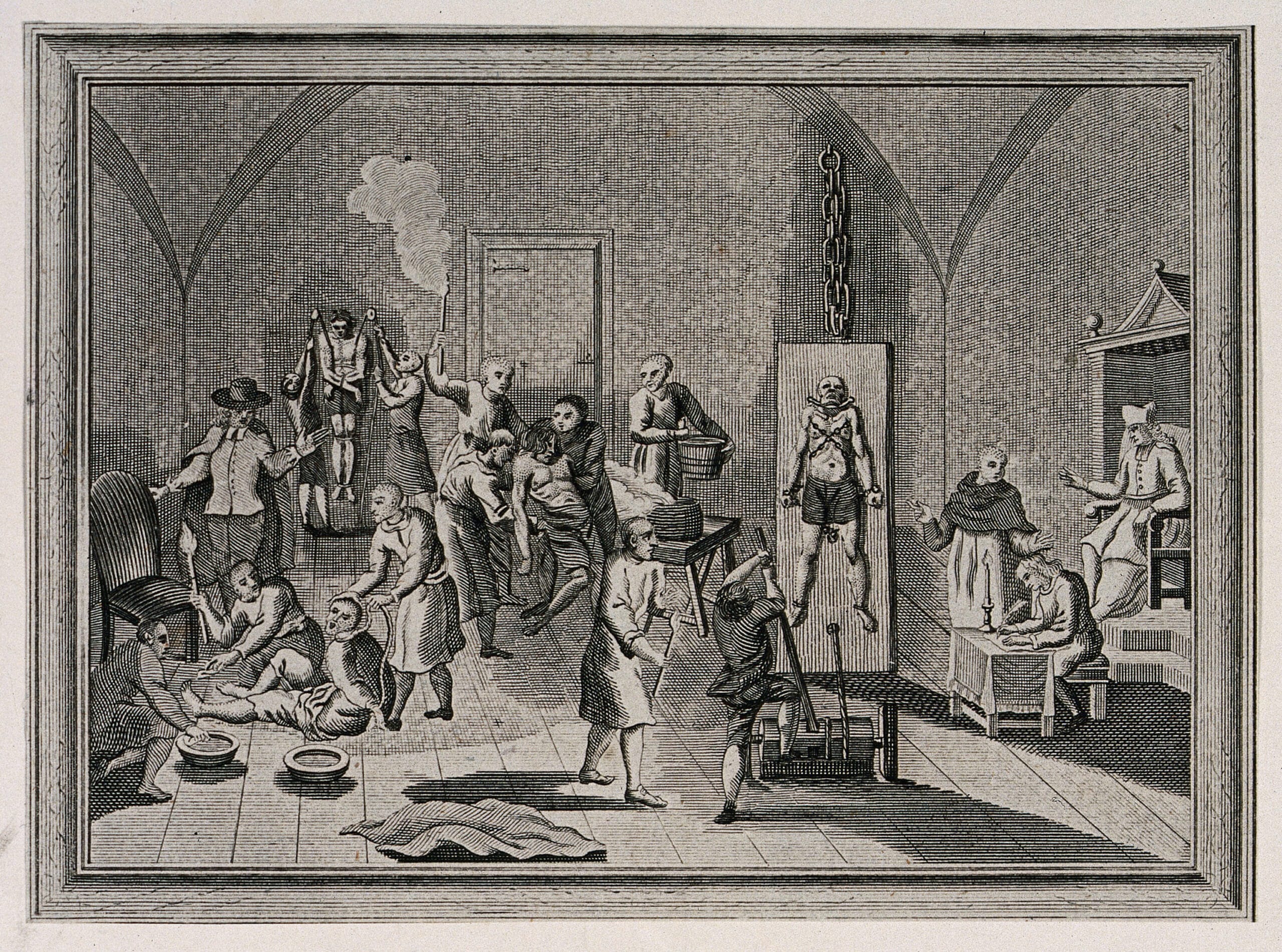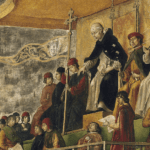Journey into the shadowy world of medieval England and uncover the chilling secrets of the Inquisition, a system that spread fear and suspicion like wildfire. This wasn’t just about torture chambers and burning stakes (though those existed elsewhere). In England, the Inquisition’s power lay in its ability to infiltrate every corner of life, turning neighbor against neighbor and silencing dissent with a whisper. This exploration delves into the trials, accusations, and punishments that haunted everyone from villagers to kings, revealing a legacy that continues to resonate centuries later.
Whispers of Heresy: The Power of Accusation
While the image of the Inquisition often conjures up torture chambers and burning stakes, the reality in medieval England was often more insidious. The true power of the inquisition wasn’t just about physical punishment; it was the fear it instilled in everyday life.
Imagine a world where your neighbor could accuse you of heresy for simply questioning a sermon. This practice, known as “denunciatio,” meant anyone could point a finger at anyone else, sowing seeds of distrust within communities. Suddenly, casual conversations about religion could have dire consequences.
This culture of suspicion wasn’t solely about religious fervor. Power struggles were also at play. The clash between Archbishop Arundel and Lord Cobham, for example, transcended theological debate; it was a power struggle where the inquisition became a weapon to silence dissent and consolidate control.
The inquisition’s reach extended far beyond the courtroom, seeping into homes, taverns, and even private letters. It’s as if the very language was infected by an undercurrent of fear and self-censorship.
The Lollards: Challenging the Church and Fueling the Flames
One group that drew the ire of the Inquisition was the Lollards, followers of religious reformer John Wycliffe. The Lollards dared to challenge the authority of the Church, arguing for things like access to the Bible in English and questioning the extravagance of the clergy.
In 1401, the Church, seeing the Lollards as a direct threat, passed the De Heretico Comburendo Act. This law, allowing for the burning of heretics at the stake, fueled the flames of the inquisition, giving those in power a terrifying tool to enforce religious conformity.
Living Under Suspicion: How the Inquisition Impacted Medieval Life
To truly understand the Inquisition in England, we need to look beyond the trials and punishments and examine how it permeated every aspect of medieval life.
-
The Power of Reputation: In a world without social media, your “public fame” was everything. Rumors and accusations, true or false, held significant weight. If enough people whispered that you were a heretic, the inquisitors might come knocking.
-
Psychological Torture: While physical torture existed, the real torment was often psychological. The threat of imprisonment, isolation, and the fear of eternal damnation weighed heavily on the accused. Confessions, often extracted under duress, became the lifeblood of the inquisition.
-
Public Shaming: Imagine being forced to publicly confess your “crimes” and beg for forgiveness. This humiliation, a common tactic of the Inquisition, served as a warning to others who might dare step out of line.
The legacy of the English Inquisition left an enduring mark on society. It fostered a climate of self-censorship and religious conformity that lingered for centuries. While we may never fully grasp the true extent of its impact, the English Inquisition stands as a chilling reminder of what happens when power goes unchecked and fear becomes the dominant force in society.
Key Figures in Medieval England’s Culture of Inquisition
Two figures stand out as pivotal to understanding the complexities of this period: Archbishop Thomas Arundel and Sir John Oldcastle, also known as Lord Cobham.
-
Archbishop Arundel: A staunch defender of the Catholic Church, Arundel saw the Lollards as a direct threat to religious authority. He wielded the power of his position to silence dissent, leading the persecution of many Lollard followers.
-
Lord Cobham: This nobleman and respected knight found himself drawn to the teachings of the Lollards. His outspoken beliefs and association with the movement, even with his ties to the King, led to accusations of heresy and treason.
The contrasting lives and fates of Arundel and Cobham illuminate the religious and political tensions of the time. They serve as a reminder that the Inquisition in England, while less brutal than its counterpart in Spain, had a profound impact on the lives of those who dared to question the established order.
The Enduring Legacy: Unpacking the Myths and Complexities
The story of the English Inquisition is often shrouded in myths and misconceptions. While it’s true that fear and persecution were very real, it’s essential to approach this period with nuance and balance.
-
The Myth of Uniformity: The Inquisition wasn’t a monolithic force across Europe. The English experience, while sharing some similarities, differed significantly from the infamous Spanish Inquisition.
-
Torture and Its Limits: While torture existed, it wasn’t the commonplace horror often portrayed. In England, its use was strictly controlled and often employed as a threat rather than a routine punishment.
-
Beyond Religious Dissent: Accusations of heresy weren’t always driven solely by religious differences. Personal grudges, power plays, and local rivalries also factored into accusations.
The English Inquisition wasn’t just about religious persecution; it was a complex web of social control, power dynamics, and anxieties about dissent. Its legacy is multifaceted, reminding us of the dangers of unchecked authority, the importance of critical thinking, and the need to safeguard individual freedoms. As we continue to learn from this tumultuous period, we gain a deeper understanding not only of medieval England but also of the fragility of freedom and the enduring human struggle for truth and justice.
- Unveiling the Enigma: Mansoureh Khojasteh Bagherzadeh’s Public Appearances & Private Life in Iran - July 18, 2025
- Unveiling the Mystery: Mansoureh Khojasteh Bagherzadeh’s Husband: A Rare Glimpse into a Private Life - July 18, 2025
- Unveiling Masoud Khamenei’s Mother: Power, Influence, and Iran’s Future - July 18, 2025

















1 thought on “Unveiling the Dark Heart: The Culture of Inquisition in Medieval England”
Comments are closed.